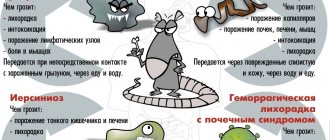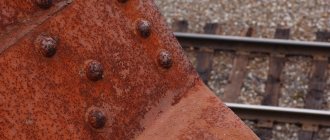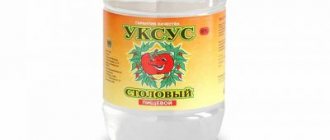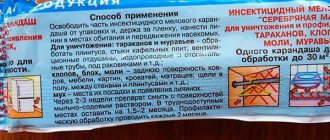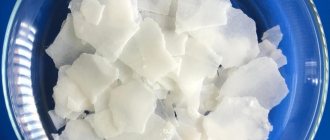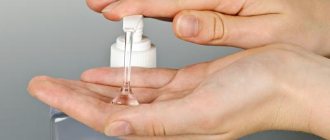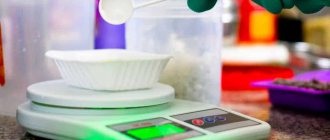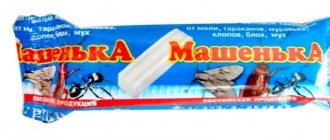Rodents have always lived among people. Residents of the private sector regularly suffer from their invasion - they manage houses and household outbuildings. Rat killers help control pests. Rat poison, if used correctly, will help kill rodents forever.
- What is it? Release forms
- Natural remedy
- Symptoms of poisoning
- Rat Death #1
What is it?
To kill rats, rodenticide is used - this is the official name of the poison for pests. This remedy is one of the most radical. It contains a complex of chemicals that is lethal to rodents.
Release forms
Manufacturers offer several variations of rat poison:
- Briquettes are individually packaged bars that visually and taste like meat and have a plasticine consistency. The poison is green because scientists have noted a good reaction of rats to bright shades. The most famous examples of briquettes are the poisons Ratobor and Krysin.
- Tablets are a popular form of rat poison, a type of briquettes, leading the rodent poison market. Contains a small amount of toxic substance.
- Granules - found in blue, green and pink colors. They look like dry pet food. Convenient to use, their small size allows you to place the granules in hard-to-reach places. One of the most popular products in granules is Typhoon from the manufacturer Rubicon-Agro.
- The grains are similar to granules and attract rats by their appearance. They act gradually.
- Poison in liquid form - like other living creatures, rodents need to drink liquids. The poison is poured into bowls and water in the house and nearby is removed from the access area. The rats drink the poison, then die.
- Powders - used in combination with other products. More often, a mixture is made from them, adding flour or sugar, sprinkled on the pests’ favorite food.
- Gels are poison with the addition of aromas and flavorings to attract the attention of rats. Retains its properties for a long time and is not affected by sunlight and temperature changes. Pests eagerly eat such poison.
Interesting! In terms of ease of use, poison in powder and granules is the leader.
Mice can become poisoned not only after eating bait, but also in the process of trying to clean the body of poison if they get dirty in it.
Natural remedy
If you don’t want to use store-bought products because of their toxicity, you can use folk recipes and prepare homemade poison that will help get rid of rats. This method is used if there are small children or pets in the house - they may accidentally eat the poison.
To prepare poison at home you need to take:
- grains, cookies;
- 0.2 kg of cement;
- 0.5 kg granulated sugar;
- 0.3 kg flour.
The components are mixed and the resulting mixture is placed in the habitats of rodents.
Catching rats. What you should know
Rats are smart creatures and sometimes catching them in traps is quite problematic. Here you need to adhere to the following rules:
- Before setting traps, you need to get rid of all crumbs, food, and water in the house. Carefully check all cabinets where food is stored for holes and cracks. Maintain hygiene, ventilate the room and take out the trash to deprive rodents of their last opportunity to eat. Rats, in the absence of food, will be more willing to fall into your traps.
- Traps should not be placed in a random order, but where the approximate location of the rats is in your home. Find the entrances to the burrows along the walls, also pay attention to where there is a large accumulation of parasite feces and place them there. Here
- You need to understand that if you place a trap in the center of the room, it will not bring you success, since rats run along the walls and hide from people’s eyes.
- Rats have a very developed smelling apparatus, which is why do not touch traps with your hands, only with gloves. All traps must be clean and free of foreign odors. Before using the trap, you must rinse it well and only then use it. And this procedure needs to be done several times. After you catch a rat, it is necessary to wash the trap, because the next victim will not fall for it if the trap is not washed.
- Bait. It should be a product with a strong odor - smoked or fresh meat, slightly burnt lard, sausage, minced meat, fish, bread soaked in vegetable oil. Cheese is not always effective. The bait must be changed periodically to ensure it remains attractive to rats.
- It is necessary to select traps of appropriate quality. This is especially true in cases where a rat is caught alive - then products made from materials that it can easily chew through will be ineffective. If part of the trap is adjacent to a wall or floor, care must also be taken to ensure that the rodent does not damage them. When catching large rats, you should choose traps from which this rather large animal will not be able to escape and which it will not be able to throw.
It is worth remembering that when you remove a rodent from a trap, it is important to do this with gloves, since the slightest wound can lead to serious consequences and illnesses. After completing the procedure, be sure to wash your hands with soap and water.
Also pay special attention to children and pets. There are a lot of cases where small children fell into traps and traps. All traps are, of course, safe for human health, but some mechanisms are designed in such a way that they can cause injury to a cat, dog or child.
Now let's look at rat poison from rats.
There are several groups of toxic substances.
- Instantly toxic substances. If a rat swallows just such a bait, then death will occur after the poison enters the stomach, that is, immediately. As a rule, such poisons have a mummifying effect, which means that after the rat dies, it will not smell disgusting, but will immediately begin to dry out.
- Long-acting anti-inflammatory agent. If such bait gets into the rat's stomach, then death will occur within 1.5 -2 weeks, depending on how much poison got into the stomach. In any case, the toxic substance in the rat's body will slowly destroy the circulatory system.
Each type of poison is unique in its specificity. Some have a detrimental effect on the nervous system, some on the digestive tract, and some simply kill by causing paralysis.
Methods of influencing the pest
According to the nature of their effects, poisons are as follows:
- Chronic - used in small quantities, harmless to pets. After a rodent eats poison, death occurs only after 10-14 days, depending on the concentration of the active substance in the composition. Despite the delayed effect, they are considered effective: rats do not perceive the connection between the use of poison and death, and continue to eat the bait. This group includes anticoagulants.
- Acute action - they work instantly after entering the animal’s body. Prohibited for sale in regular stores, used by pest control specialists. Rodents quickly realize that their relatives are dying due to eating bait, so they try to avoid the poison. Such poisons include agents with a mummifying effect. Their advantages are the absence of the unpleasant smell of decomposition after the death of rats. The body simply dries out over a certain period of time.
Note! These substances are dangerous for pets.
Those who are interested in the question of how quickly rat poison acts should carefully study its variations. Different drugs have their own composition and characteristics of action.
Original Death of the Rat and counterfeits
Today in Russia, at most points of sale, it is not the original Rat Death that is sold, but its analogue, produced under the Tigard brand. In fact (strictly speaking), this poison is a counterfeit, although its composition is identical to that of the original drug and it has the same effectiveness.
The photo below shows the drug Rat Death No. 1 in the original packaging from Ital Tiger:
And the next photo shows us the poison produced by Oboronkhim, Russia:
The photo clearly shows that the packaging design is almost identical, so an inexperienced buyer will not notice the difference at all.
Partly, the need to create counterfeits is related to economic restrictions on the sale of Ukrainian products in Russia. In particular, in Moscow, St. Petersburg and other large cities today it is almost impossible to buy the original Rat Death.
Perhaps the only obvious drawback of the counterfeit (besides the somewhat unethical use of the name and emblem with a similar design) is the assurance on the packaging that Rat Death has a so-called mummifying effect. And many buyers count on this effect of the drug, which supposedly will prevent the spread of odor from dead rats, and willingly buy the product.
In reality, the poison does not have any mummifying effect and does not protect against the appearance of odors in the room. Today, in the market of rodenticides, it has generally become quite fashionable to attribute mummifying properties to drugs, since this advertising ploy is good at spurring demand. What’s interesting is that the mummification effect is often claimed by companies that only package and distribute the products, while manufacturing companies (in most cases foreign) do not mention mummifying properties in the instructions at all. And where will they come from if the poison simply does not contain substances that could stop the decomposition of corpses...
Review
“We met rats when we moved into an old house; they climb up to our second floor and don’t let us live. Having a cat doesn't affect them. We bought rat death N1, a small package, it cost 60 rubles. The tablets were placed in several places and the rats disappeared within a week. And a few days later a terrible stench appeared in the room, as I understood, this poor fellow began to rot somewhere. I had to endure the terrible stench for a long time, it’s not clear where she died...”
Elvira, Kazan
Types of rat poison
There are several varieties of organic poison for mice and rats on sale.
Among them are:
- Rats are one of the first means of combat. They are made from zinc phosphide and naphthylthiourea. These components are very toxic, so rodents die within two hours after consuming the poison. The drug has been proven to be 100% effective. One portion of rats can cause the death of a medium-sized animal or cause serious harm to a person. Today they are used if other options do not help or when developing immunity in rats to other poisons.
- Poisons based on arsenic, lead and thallium. Outdated long-acting options - the death of the animals occurs after several days of painful agony. Sometimes strychnine and thallium sulfate are added to arsenic-based products. This makes the poison more effective. The main disadvantage of this poison is its increased toxicity. It can kill large domestic animals and negatively affects people in the area of effect of the substance.
- Zoocoumarins are modern drugs whose action is to disrupt blood clotting in rodents. A rat that eats poison begins to bleed internally. The blood flowing from the animal contains anticoagulants that infect other pests living nearby.
The latter are of two types:
- first generation - act slowly, are not able to accumulate in the body, are excreted through the kidneys (Rakumin, Zoopasta, Rotendant);
- second generation - highly toxic, accumulate in the body of rodents, the effect is noticeable after the first use (Tsunami-Extra, Storm, Cyclone).
It is quite difficult to choose the right poison and calculate its exact amount. Before using the drugs, it is recommended to carefully study the instructions.
Forms of release and principle of operation
The drug, called “Rat Death”, is produced in Ukraine. The raw materials for the production of poison are supplied from Italy. The product destroys both mice and their rather smart relatives - rats.
No. 1, 2 and a new product in the form of glue
The company produces the drug in two forms. Both remedies are very effective. To decide which drug to give preference, consider the comparison table below.
Table - Characteristic features of the varieties of the drug
| Category | "Rat Death" number 1″ | “Rat Death” number 2″ |
| Active substance | Brodifacoum (anticoagulant - a substance that inhibits blood clotting) | Bromadiolone (more powerful anticoagulant) |
| Toxicity | Average | High |
| Appearance | Blue-green substance | red matter |
| Timing of death | 4-8 days | 4-8 days |
| Lethal dose for one rat | 2 g | 6 g |
| Environmental hazard | Very high | Average |
Despite the different active ingredients, both drugs work effectively and provide the same results.
You can find another type of drug - “Rat Death” glue, produced in 135 g tubes. But such a product only fights mice and is powerless against rats.
Additives in the composition
Both drugs are produced in the form of briquettes with a dough-like structure. They are packaged in special bags that allow odors to pass through well. But since not a single active ingredient has an aroma, the composition of the “Rat Death” drug includes special additives that can attract rats:
- flour;
- sugar;
- natural flavors;
- vegetable oil.
According to reviews, the drug “Rat Death” has a mummification effect. However, the manufacturer himself does not state this, and the poison does not contain the corresponding substances.
How does the poison work?
Bromadiolone and brodifacoum are among the rodenticides that have an anticoagulant effect. Therefore they work exactly the same. Only when choosing drug No. 1 will you need a larger amount of poison. If the choice is No. 2, the doses are significantly reduced and the product is used more sparingly. How does “Rat Death” work on rodents? Schematically, this can be described in four steps.
- Appetizing bait. The drug, which has a fragrant odor for rats, attracts rodents. Since the poison contains very little toxic substance, the animals’ sensitive receptors do not detect it. And the rat calmly eats the drug.
- The process of intoxication. The poisonous substance penetrates the liver. The anticoagulant blocks the synthesis of vitamin K, which is responsible for blood clotting.
- Detrimental impact. The active substance is not excreted in the urine, but gradually accumulates. In the pest’s body, hemorrhages begin in the internal organs.
- Death. Approximately on the third or fourth day, a lethal dose accumulates, which leads to the death of the rodent.
One of the main advantages of the drug, which ensures its high effectiveness, is its delayed action. Rats are quite intelligent creatures. Having seen the death of their relative, they will forever remember the smell of poison and will never touch this poison again. But since Rat Death does not cause immediate death, rodents continue to eat the pellets without fear.
Drugs included in the composition
The composition affects the speed of their action. Products developed for rodent pestilence are organic and inorganic.
The first ones are quite effective, with a mild effect. In small doses they are harmless to people and pets.
These include:
- Anticoagulants block blood clotting in pests, act quickly, and do not harm the environment. The active ingredients in such drugs are bromadiolone, coumarin, warfarin, brodifacoum.
- Ratsids help poison rats by stopping their breathing. They are used rarely - once every couple of months due to the development of immunity to it in rodents. The main component of these drugs is naphthylthiocarbamide.
Inorganic poisons are used less frequently because they are very toxic and can cause serious harm to others. They contain heavy compounds - lead and aluminum salts, thallium and other metals. The use of such means is a last resort: they are used when rats are adapting to organic poison or in situations where there are really a lot of pests. Rat poisons containing phosphite are especially dangerous.
For poisoning of rodents in rooms with a small area, preparations with the addition of denatonium are used together with flavorings and food additives. In large areas, products based on bromadiolone are used - a gel-like poison approved for use in schools, kindergartens, hospitals and residential buildings. You can also poison pests using products containing brodifacoum.
Rat Death #1 and Rat Death #2: What's the difference?
Fundamentally, Rat Death No. 1 and Rat Death No. 2 differ in their active ingredients: the active ingredient in the first drug is brodifacoum, and in the second, bromadiolone.
For the rat fighter himself, this distinction is important because bromadiolone is more toxic to rats. And since a smaller amount of poison is required to poison one animal, Rat Death 2, generally speaking, is more rational to purchase and use.
Also, Rat Death number 1 is blue-green in color, while Rat Death number 2 looks more like pieces of meat. Which, by the way, makes the second poison even more attractive to rats.
The photo below shows Rat Death #1:
And here is Rat Death No. 2:
The price of both poisons is approximately the same: they cost about 70 rubles for a package of 8 briquettes (weighing 100 grams) or about 120 rubles for a package of 16 briquettes (weighing 200 grams).
On a note
As mentioned above, in general, Rat Death No. 2 is preferable for use - also for the reason that the bromadiolone used in it is less hazardous to the environment. In particular, when recycling the remains of the product or rats poisoned by it, the load on soil biocenoses is reduced. At the same time, according to environmentalists, brodifacoum (contained in Rat Death No. 1) poses a great danger to the environment. For this reason, producing bromadiolone in Italy requires less regulatory approval and is more economical than producing brodifacoum for Rat Death #1.
How to apply it correctly?
The rules for using agents used to poison rodents are different for all drugs.
Lures are:
- Ready-made grain mixtures with the addition of toxic substances, briquettes, granules, foam. Even a beginner can use them - the poison is simply laid out around the room in rat habitats.
- Requiring preparation - concentrates that require special preparation to work with.
Baits are prepared in a separate room in compliance with safety precautions. Solutions are made in an enamel container intended only for these purposes. Opened poisons and ready-made baits must be stored in a cool place, protected from light, under lock and key.
The finished poison is laid out in accordance with the instructions in the instructions and the number of pests. Grains, granules and briquettes are placed in portions of 10-15 grams at a distance of 3-8 meters from each other. It is better to choose places near burrows, cracks in the floor, and near drinking bowls.
If you are going to poison rats outside, the poison will need to be placed directly into the holes. When using foam, it is recommended to cover the hole with earth so that the substance is not washed out by rain.
For bait, it is better to use peanut butter, chocolate, bread or cotton wool.
Please note that it is better to spread poison and set traps in the evening due to the increased activity of rodents in the dark.
How is Rat Death packaged and how much should you buy to control rodents?
Rat Death No. 1 is sold in small packages for household use and is also packaged in large containers for sale to professional rodent control services.
Today the manufacturer offers the following packaging of the product:
- Packages with 8 briquettes (net weight - 100 grams);
- Packages with 16 briquettes (net weight - 200 grams);
- Plastic buckets of 2.5, 5 and 10 kg of poison.
To fight one rat or mouse, a package of 8 briquettes will be enough. To combat several rodents in an apartment, house or office, you need to use a larger amount of the drug, in this case it is advisable to buy a package of 16 briquettes or several packages of 8 briquettes. It is advisable to buy Rat Death in bulk for eliminating pests over large areas.
If you have personal experience using Rat Death No. 1 or No. 2 to control rats or mice, be sure to share the information by leaving your review at the bottom of the page (in the comments field).
Video review of the drug Rat Death No. 1
Precautions when working with poisons
Whenever you come into contact with poisons, you must be as careful as possible.
If you are planning to get rid of rats from your home and plan to set traps with poison, follow these rules:
- the bait is placed in places inaccessible to children and pets;
- It is forbidden to keep food near poison;
- do not forget to throw away the carcasses of dead animals;
- Before use, you must carefully read the instructions;
- do not exceed the recommended dosage of the drug;
- use all protective equipment - tight closed clothing, masks, gloves, goggles;
- Read about first aid for rat poison poisoning.
If even a small dose of poison enters the body, immediately seek qualified medical help.
Symptoms of poisoning
Today the sale of poisons based on lead, arsenic, strychnine, white and yellow phosphorus is prohibited. When they enter the body, after 12 hours the first signs of intoxication are noted:
- nausea;
- headache;
- severe bloody diarrhea;
- excessive pallor;
- lack of appetite.
The first step when symptoms appear is to induce vomiting, then take activated charcoal and a laxative. Drinking plenty of fluids is recommended. If poison gets on your skin, wash it thoroughly with soap. If you do not know the name of the rat poison that has entered your body, follow the general procedure for poisoning, then be sure to go to the hospital.
Routes of entry into the body
A person can become poisoned in several ways.
Most often this happens as follows:
- with food - once it enters the gastrointestinal tract, the poison is instantly distributed throughout the body through the blood;
- if you inhale particles of poison, they will settle on the mucous membrane and enter the lungs;
- When working with rat poison, make sure that there are no fresh scratches or cuts on your hands—the drug can enter the bloodstream through damaged areas of the skin.
The substance affects each organism differently. The first signs of poisoning appear within a few hours or within a couple of days.
Effective rat repellents that work in small areas
In small areas, for example, in a chicken coop, barn, car, it is better to use low-toxic products. It is recommended to choose odorless, unsightly substances, especially if this is a residential area, or to call professional deratizers (deratization is the process of eliminating rats and mice). One of the best remedies for small areas can be safely called “Nutcracker”. It has low toxicity for people and does not smell. The product causes 100% death of rats and mice within 4–8 days.
The Nutcracker is also available in the form of a dough-like substance similar to plasticine.
TOP 6 most effective poisons against rodents
Before purchasing a drug for baiting rats, it is recommended to determine how important the speed of action of the poison is. Each has its own formula and active ingredient. Below are descriptions of the most popular and proven means for exterminating rodents.
Rat Death #1
The drug with a self-explanatory name belongs to the group of anticoagulants and is one of the most reliable and effective. It is easy to recognize by its appearance - the product resembles a tea bag.
Its advantages include low cost and ease of use. The downside is increased toxicity to people and pets. For this reason, it is necessary to work with the drug carefully.
It is produced in the form of briquettes, packed in filter paper, which allows odors to pass through.
The composition includes flour, sugar, vegetable oil and natural flavors - the poison should smell like them in order to attract the attention of rodents.
There are two types of the drug - No. 1 and No. 2. In the first, the active ingredient is brodifacoum, in the second - bromadiolone. The products also differ in taste and color. The price of both options is more than acceptable - from 70 rubles per 100 grams.
Efa
This drug has proven itself to be a good poison for rats and mice. It contains ethylphenacin, which causes internal bleeding. After consuming the poison, rodents die within 2-3 days. Release form: grains and briquettes. The product is highly toxic; it is not recommended to allow it to come into contact with skin.
The poison is easy to use. Pieces are plucked from the briquette and laid out on special substrates, which are placed at a distance of 2-3 meters from each other. It is also not recommended to place grains directly on the floor - it is better to use unnecessary containers.
This poison is useful for repelling and preventing the appearance of rats in premises. When outside the package, it does not release toxins into the air, due to which it can be placed even in the most secluded places. Today the drug is one of the most popular.
Storm
This product is new to the rat poison market and can be easily purchased at a hardware store. Belongs to the group of anticoagulants.
Its main advantages include:
- high efficiency - rodents die from tiny doses of poison;
- attractive appearance for rats - the uneven edges of the product make you want to sharpen your teeth on it;
- not afraid of moisture;
- convenient packaging.
Death from poisoning occurs within a week. The granules are placed near holes and crevices.
Zookoumarin Neo
A poison that comes in the form of brightly colored grains. 5-10 hours after consumption it causes fatal attacks of suffocation in rodents. The poison is laid out on substrates in places inaccessible to other animals and birds.
The packaging of the product is enough for one time.
If you don't want pets or children to find rat carcasses, check baiting areas at least once every three hours. Before dying, pests crawl out of their hiding places and scatter around the house. Found bodies are burned or buried.
Fumiphos
A proven and reliable rodent repellent, it is prohibited for use in residential buildings. The package with the drug should not be stored open. The active ingredient in Fumiphos is metal phosphides. This poison is capable of destroying entire hordes of rats; it acts when it enters the gastrointestinal tract and through evaporation.
The drug is available in tablet form. It is used to process food warehouses, grains, and dried fruits. In addition to rodents, the product kills insects.
The product has a low consumption - 7 grams are enough for 1 square meter.
Goliath
A strong poison that has recently appeared on the market. It has a mummifying effect, which eliminates the unpleasant smell of decomposing rat corpses.
The product is highly toxic and is used only by experts in rodent extermination.
The validity period of the substance is from 10 days and above. After eating Goliath for food, the rats begin to become clouded in their minds, they leave their burrows and randomly crawl around the room. Over time, the body dries out.
Rats, mice and other rodents are cunning animals. They notice the connection between eating bait and the death of their fellow creatures, so sometimes they refuse to eat the poison. If you notice that pests have stopped eating the poisoned treat, replace the product.
General Tips
Bowls and cups in which the poison was mixed must be thoroughly washed and disinfected. It is recommended to use disposable tableware to avoid poisoning yourself.
Make sure that pets and children cannot reach the decomposed poison . Rat poison, although less toxic than its individual components, is not intended for oral administration and can pose a threat.
Print this sign or write the warnings yourself with a red marker. Place it where the rat poison was spilled. Adults and children over 4-5 years old will understand that it is dangerous here.
To make rats smell the bait faster, drop a couple of drops of peanut oil on them. The smell of oil will attract rodents, and they will begin to eat the poison more actively. Baits should be placed in places where rats feed, for example in grains or in barns.
The corpses must be removed as quickly as possible. And the point is not that corpse fumes can be poisonous. Often the corpses can be eaten by pets, who will be poisoned by the same poisons that killed the rats. Therefore, if you find the dead body of a rodent, it should be thrown away immediately.
And remember that the most powerful poison against rats and mice does not exist. Rats easily adapt to changes in environmental conditions, which means that you will have to change poisons, otherwise they will cease to produce at least some effect.
An effective means of baiting rats over a large area
The main means of fighting over large areas are:
- bait houses. Food containing poison is placed in them. They place houses in places where there are large concentrations of rodents. When a rodent comes inside, the house closes,
- treatment of burrows with rodenticides (poisons in powder form). Particles of the product fall on the fur, and then when licked inside the animal,
- filling holes Rats can chew through most materials, even concrete. Therefore, it is better to cover the holes with metal sheets or a wall made of cement, shells and crushed glass,
- traps and traps. Most often they have a wooden base. It is difficult to catch a rodent with such devices; they can only be used in secluded places once, since rats leave their odors, warning their relatives of danger,
- carbonation. A poisonous gas based on hydrogen phosphide or carbon monoxide is sprayed into a closed room. This mixture does not harm food products and disappears quickly, leaving no odor.
